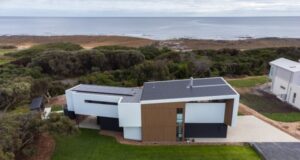The recently announced carbon tax, spiralling energy consumption and recent hikes in electricity charges are three good reasons for building owners and tenants to cut their energy costs, writes Eduardo Yudowski.
The energy dilemma is not all bad news. Recent research has found that commercial tenants are most attracted to property assets with strong sustainability credentials. Together with reduced operating costs achieved through sustainable property management, this also helps improve investor returns through higher rental incomes.
In fact, sustainable building practices are rapidly gaining mainstream acceptance as more and more people recognise that “green sense” is simply commonsense.
It has been demonstrated that energy efficient buildings can cut energy consumption by up to 50%. And with energy users in Australia currently spending around $50 billion a year on energy, even cuts of a small percentage would mean significant financial savings to property owners, as well as permanently removing carbon from our environment.
Of all the energy consumed in commercial buildings, lighting represents 21% of the total. Whether the building is old or new, a designed-for-purpose lighting management system will lead to greater energy efficiency by using power for lighting only when needed, and turning lights off or down when they’re not.
In order to limit energy use for new commercial buildings, the Building Code of Australia (BCA) has set a mandatory minimum performance requirement for illumination (Part J6), or maximum illumination power density (IPD), for example 10W/m² for an artificially lit office. It’s well-known that older buildings can have up to more than three times the IPD of new, regulated buildings, leaving a lot of room for energy reduction through the retrofitting of lighting control systems. Further, the BCA promotes the use of energy efficient products by allowing building owners to increase the amount of permissible watts per square metre through the use of lighting management systems.
Lighting management can not only lead to significant energy and monetary savings but also to an enhanced working environment for building occupants through lighting designed for specific uses. So when it comes to choosing a lighting management system, the decision should be based on specific applications in individual office environments, also taking into consideration the use of each room. In order to achieve optimum energy efficiency from a system, different approaches should be taken for small enclosed spaces, large open spaces and where there are large obstacles such as panels and storage.
While the BCA regulates new buildings, reducing energy consumption in existing buildings requires building owners to seek out the latest technological solutions. In the case of lighting, the best and easiest solution is to install movement sensors. These can be either stand alone or network sensors with room controllers. Stand alone or switch sensors are used, for example, in offices for switching lights off when the room is unoccupied. Network sensors are connected to room controllers and used to manage larger areas and different load types, such as DALI or DSI.
Room controllers can be installed in the roof cavity and are capable of managing up to 10 sensors wired in a daisy-chain configuration. These are linked by a category-rated or two core non-polarised flex cable, significantly simplifying the wiring of the installation.
The most popular detection operating mode for sensors in Australia today is occupancy-based control, known as Auto On/Auto Off, which works when the sensor switches lighting on and off in response to the occupancy of a particular space. However, the alternative vacancy-based control (or Manual On/Auto Off), has been shown to be the most energy efficient way of controlling lights, according to European Standard EN15193. This method can achieve up to 25% energy saving.
The reason for this is that the user becomes eco-responsible by manually switching the light on only when they need it and allowing the system to switch lights off automatically. With the increased focus on energy saving, vacancy-based control is likely to grow in popularity with the energy conscious user.
There are other energy saving functions which can be added to the operating mode of a lighting system, using the remote control for programming. The ‘Walk Through’ mode, for example, switches lights off just three minutes after initial occupancy if no motion is detected after the first 20 seconds. This function is used to shorten the normal time delay where just walking through an office does not warrant keeping the lights on for a normal delay time.
Day-lighting control is increasingly topical as building owners and tenants try to utilise as much natural light as possible and cut the use of artificial lighting. Based on the amount of light measured by the built-in light level sensor, sensors play a dual role in enhancing the use of day-lighting controls. Firstly, the sensor will automatically dim or switch off the light if the natural lighting levels exceed the preset daylight threshold and secondly, if the natural light levels are low and the sensor detects someone in the room it will automatically switch lights on.
A lighting management system does not need to be complex to be efficient. Installation of a movement sensor with a room controller does not require any software program or complex coding. However, if required, sensors and room controllers can be part of a larger automated network that controls lighting for the entire floor or building, putting energy consumption further in the control of building owners and tenants.
Programming tools have come a long way since the days when sensors had to be adjusted manually, using a screwdriver. By using one-way communication remote controls functions can be easily adjusted, such as time delay and light and movement sensitivity.
An advanced remote control with an LCD screen features two-way communication, allows readings to be taken from the sensor on the system’s time delay, light levels, sensitivity and other setting. The two-way remote also allows for easy adjustment of these settings, as well as diagnosing problems and storing different profiles. These profiles can be used later to ‘clone’ sensors, which is often required for large installations. Legrand’s dedicated lighting management website, www.legrandoc.com, provides installers and users with detailed instructions and technical information for all Legrand lighting management devices.
It is possible to make buildings more energy efficient through lighting management, with the added, and not insignificant, benefits of providing comfort and safety for the occupants and protecting the environment.





